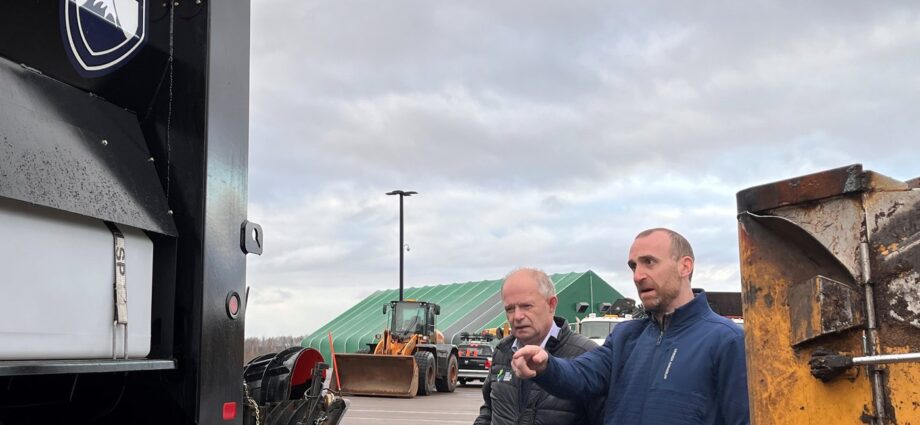
By Caitlin Coombes, Local Journalism Initiative Reporter, The Guardian
November 30, 2023
CHARLOTTETOWN, P.E.I. — Changing weather patterns may lead to increased run-off and road salt usage during the winter months.
UPEI biomedical sciences and biology professor Michael Van den Heuvel told SaltWire on Nov. 16 that while there is some concern, there is little research being conducted into run-off of road salt.
“Everything with regards to the impacts on P.E.I. is entirely hypothetical,” Van den Heuvel said.
Van den Heuvel said he has yet to come across individuals measuring or studying road salt as an environmental issue in P.E.I. but has seen it done in other areas.
“Nobody has said, ‘Look at all this bad stuff happening due to salt’ on P.E.I. because there’s nothing visually obvious,” Van Den Heuvel said.
Szwarc stated that more than 4,500 kilometres of roadways are plowed during the winter across the province, with approximately 500 km serviced with salt, primarily busy and major roadways.
A sand mixture including a small portion of salt is spread on the remaining 4,000 km of less busy roadways, intended to help with vehicle traction while not damaging the asphalt.

“Salt is used for snow and ice control. For the main highways the goal is to get down to bare asphalt,” Szwarc said.

Approximately 70 per cent of winter road clearing across the province is done by contractors, but those major highways cleared by highway maintenance are monitored and managed around the clock.
“We may look after less, but there is just as much or more gear needed to deal with the weather conditions,” Szwarc said.
The salt and sand used on the Island is transported here throughout the winter, continuously refilling silos across the province.
The amount of salt and sand used in P.E.I. during the winter varies from year to year and is dependent on factors such as temperature fluctuations and the number of storms.
The City of Charlottetown avoids unnecessarily salting of sidewalks and pathways during the winter months, only salting after a freezing rain event or during quick-cooling weather events when ice is most prevalent.
“Using too much salt isn’t effective, you need to use the right amount of material,” Szwarc said.
Salt used on roads is only effective for melting salt when temperatures are under -6 C, but within this temperature zone weather patterns are also subject to change.
Did you know?
The Charlottetown police recommend safe driving habits as P.E.I. prepares for winter driving:
Have winter tires on your vehicle as well as a snow brush/scraper in your vehicle.
Clear all windows, lights, mirrors and the top of your car from snow and/or frost before driving.
Slow down and adjust driving for road conditions.
Leave room between your vehicle and the vehicle in front of you as stopping can take longer on ice/snow-covered roads.
Pay attention while driving and make sure you are not distracted.
During winter storms, road salt that does not dissolve can be pushed off the road by snowplows, washed away in the rain and otherwise disturbed.
Van den Heuvel explained that while there has not been any visual evidence of the environmental impacts of road salt, the Island remains an ideal location for research on this subject.
“The density of roads is higher than any other province in Canada, so if you’re going to have salt effects we would certainly be somewhere where you might expect to see that,” Van den Heuvel said.
More research is required to better understand the impact of salt and sand on the environment, weighing the environmental hazards of both materials while continuing to provide safety for motor vehicles.
Subscribe to our newsletter.
Caitlin Coombes is a Local Journalism Initiative reporter, a position funded by the federal government. She can be reached by email at caitlin.coombes@saltwire.com and followed on X @caitlin_coombes.

